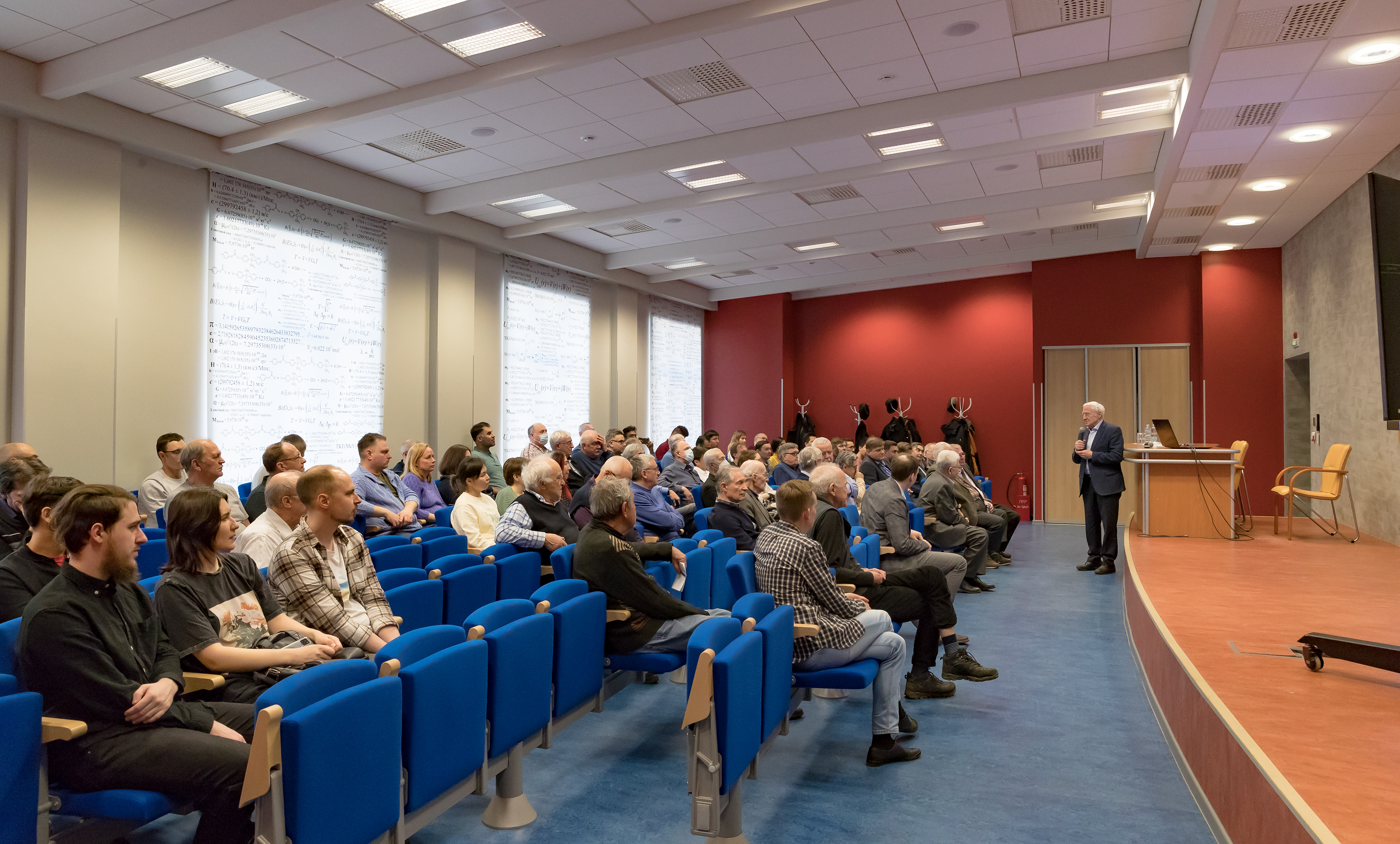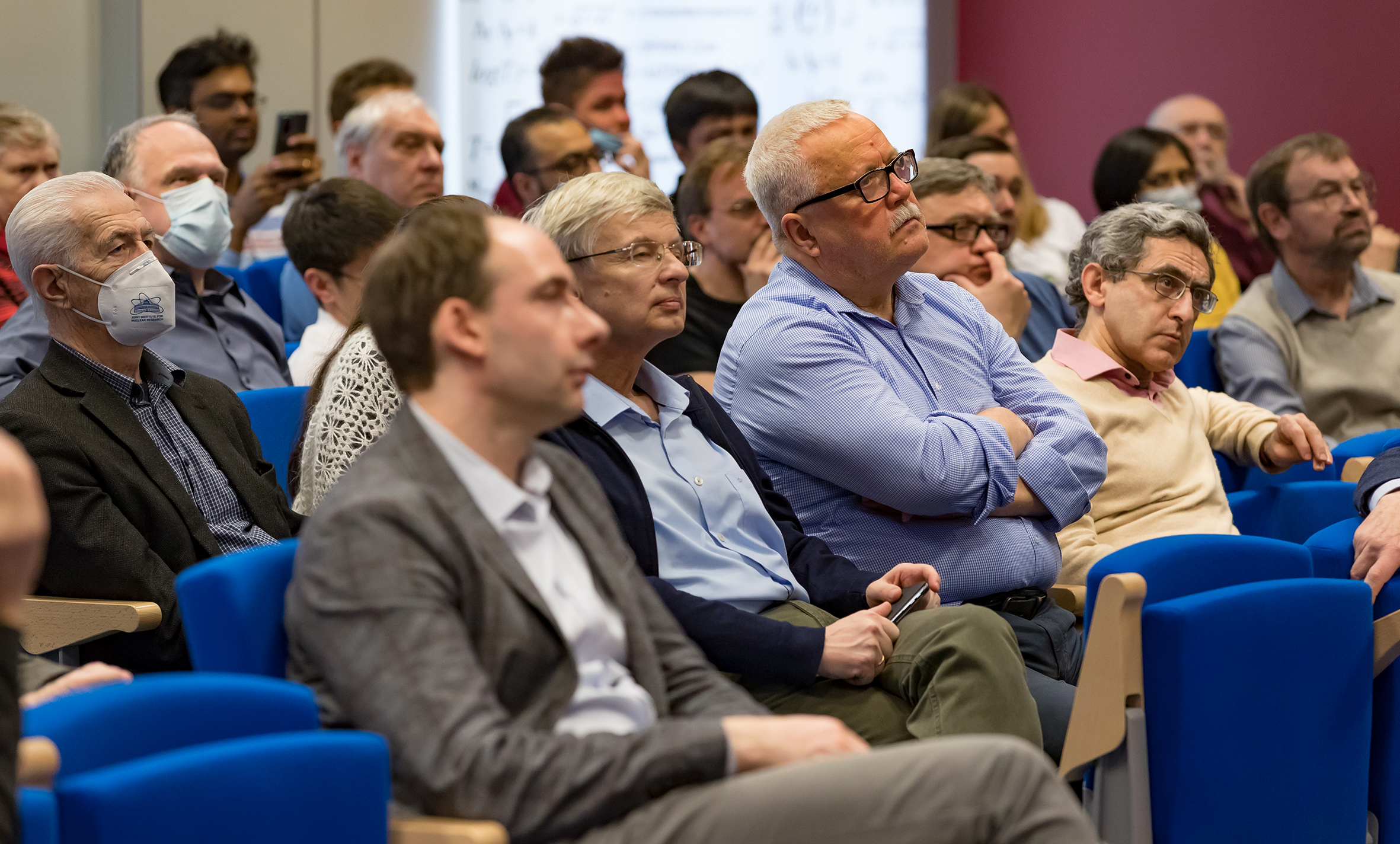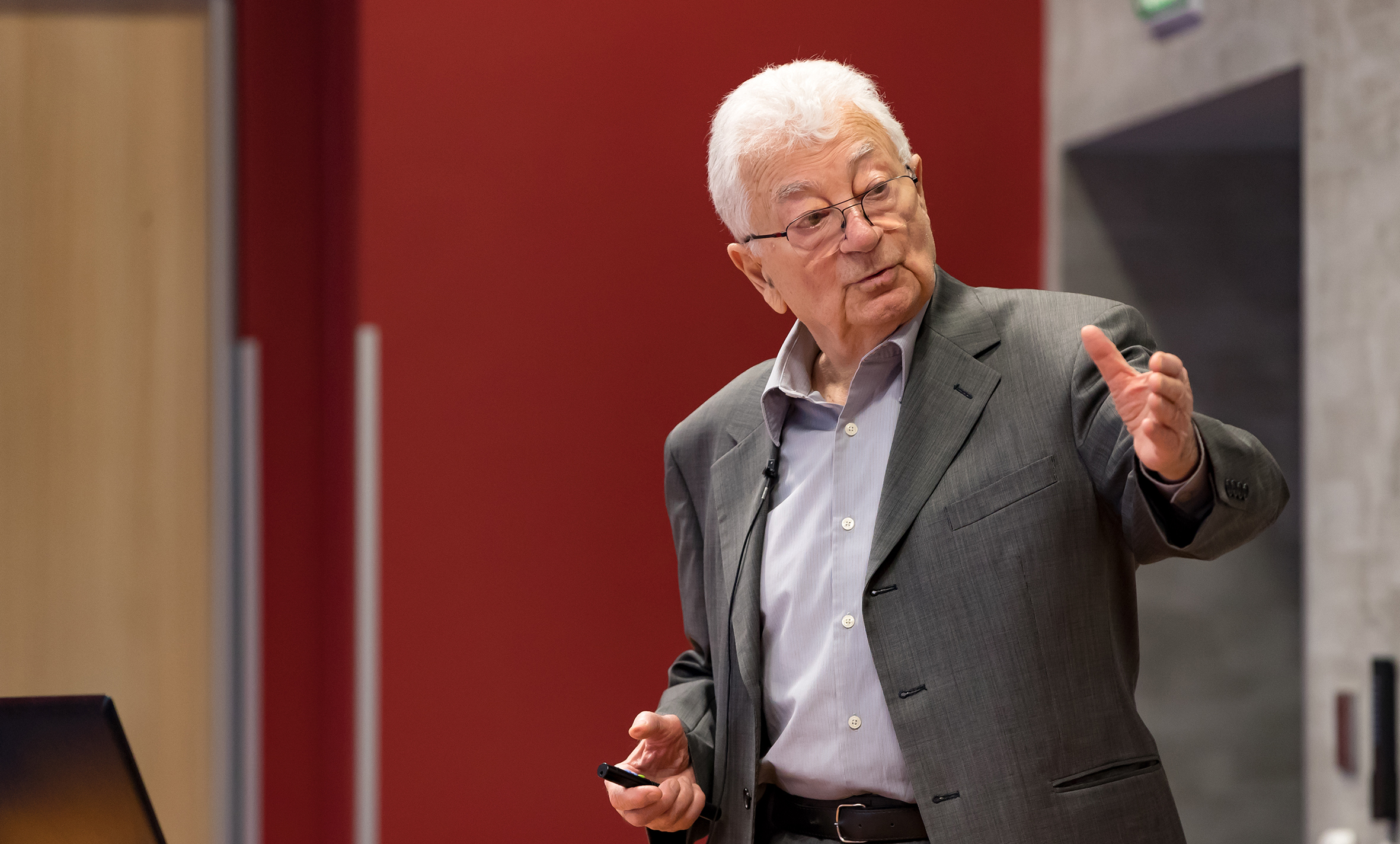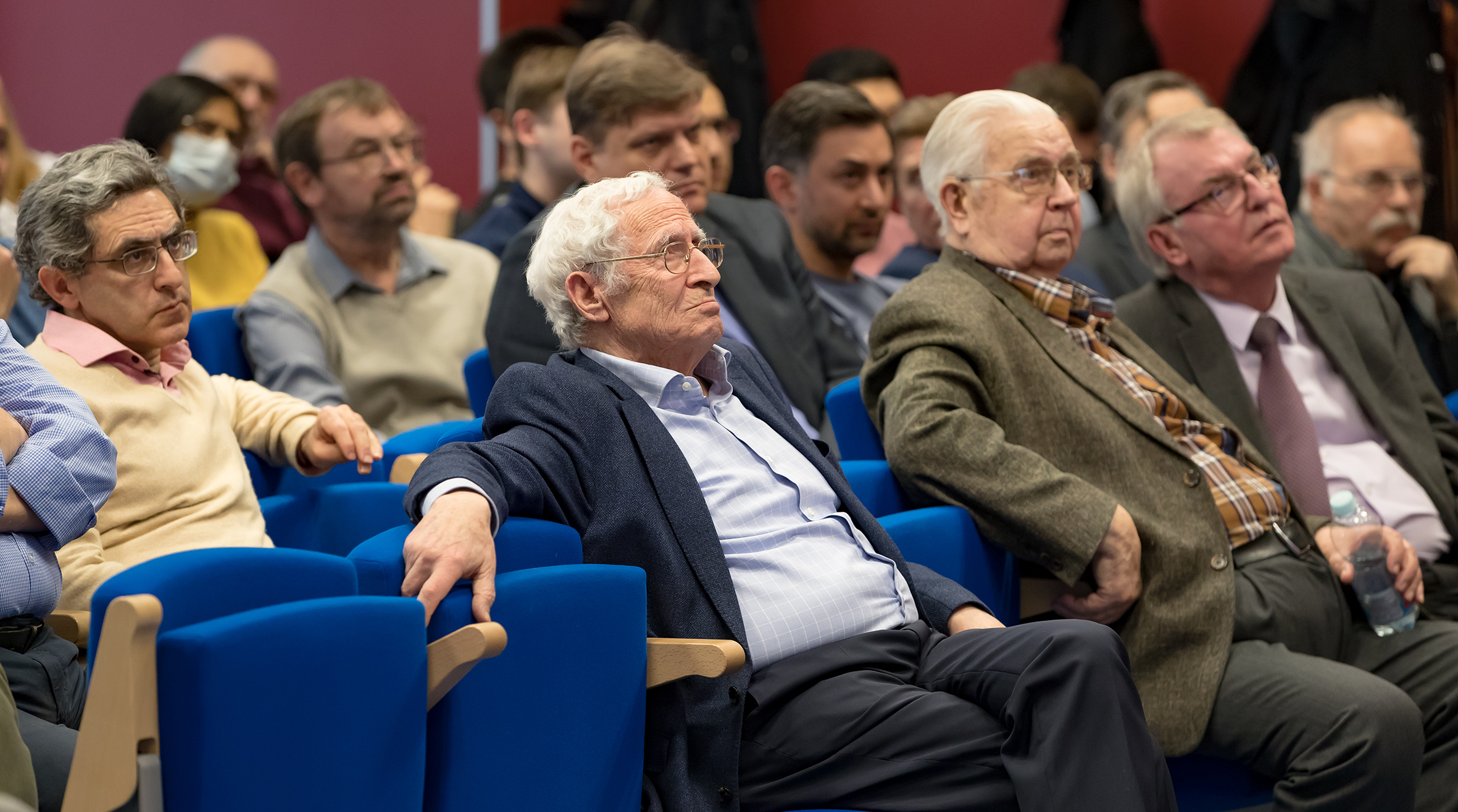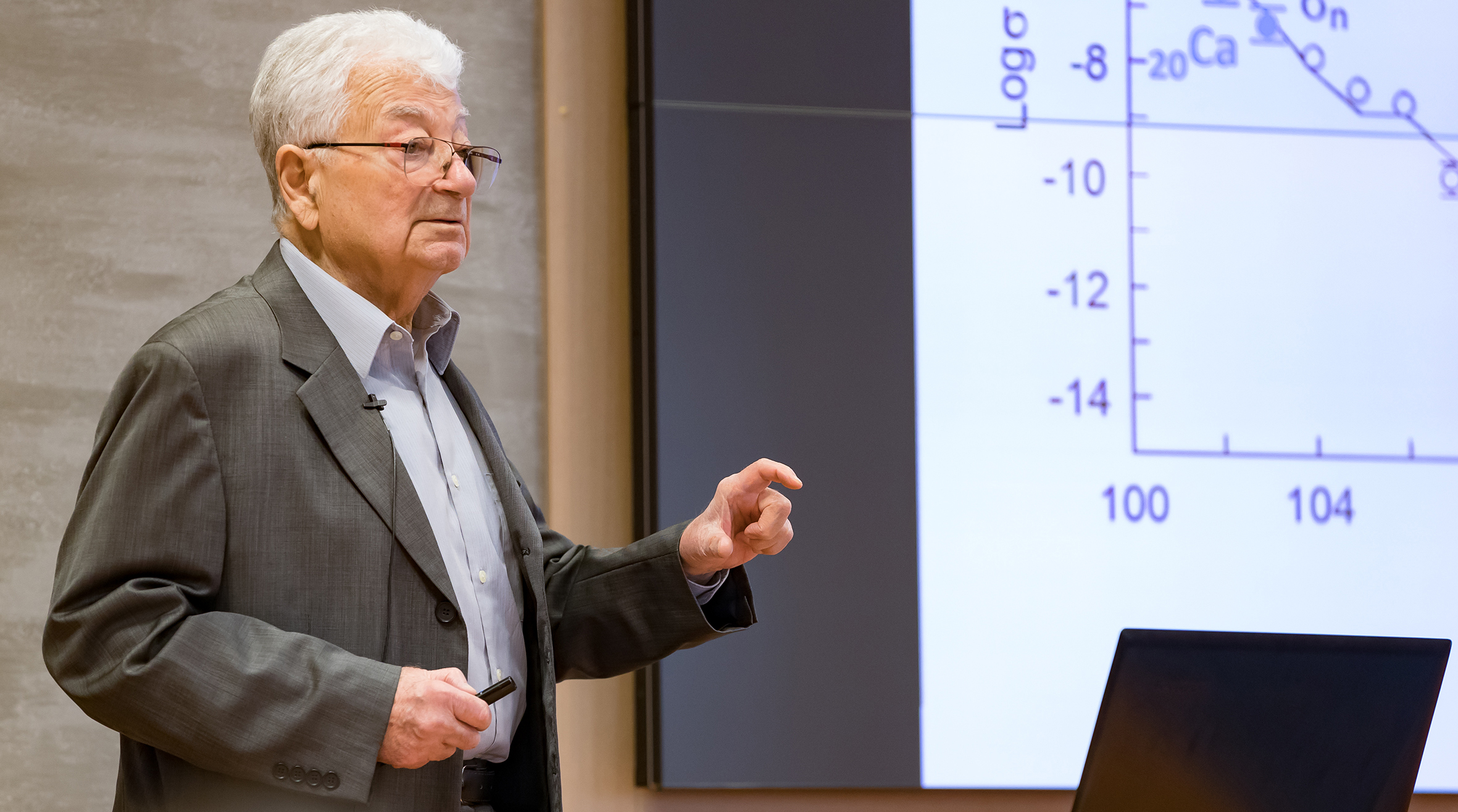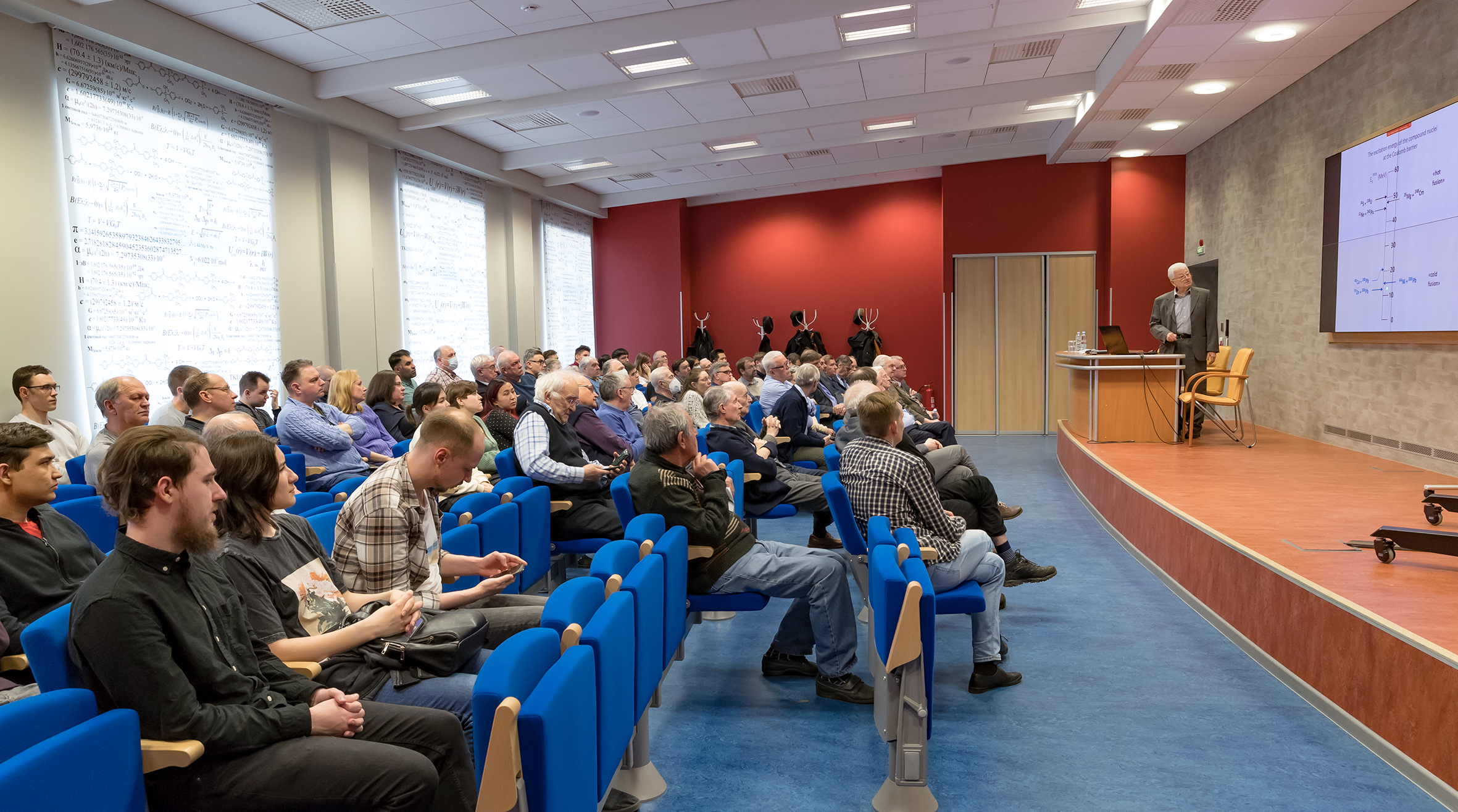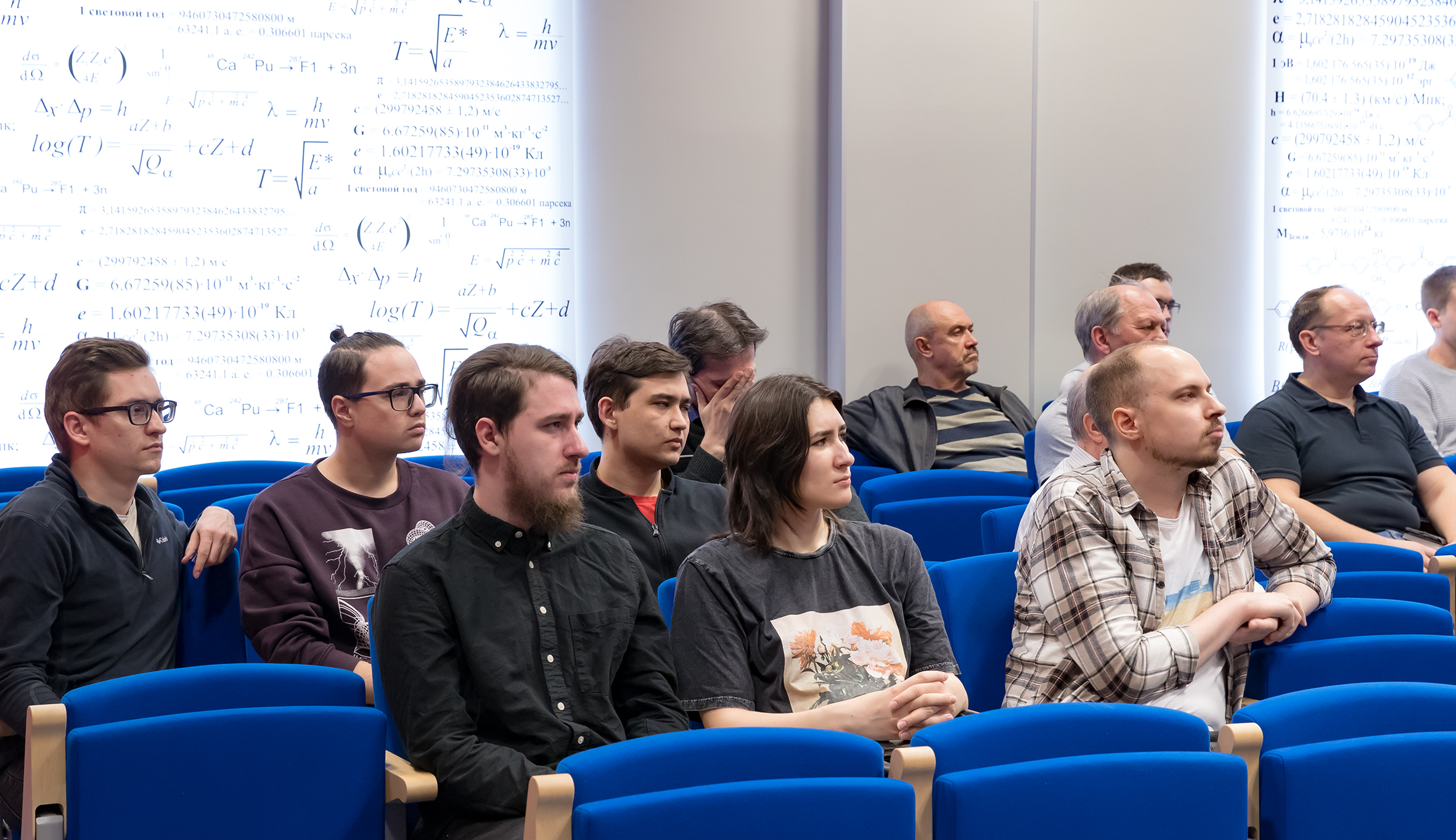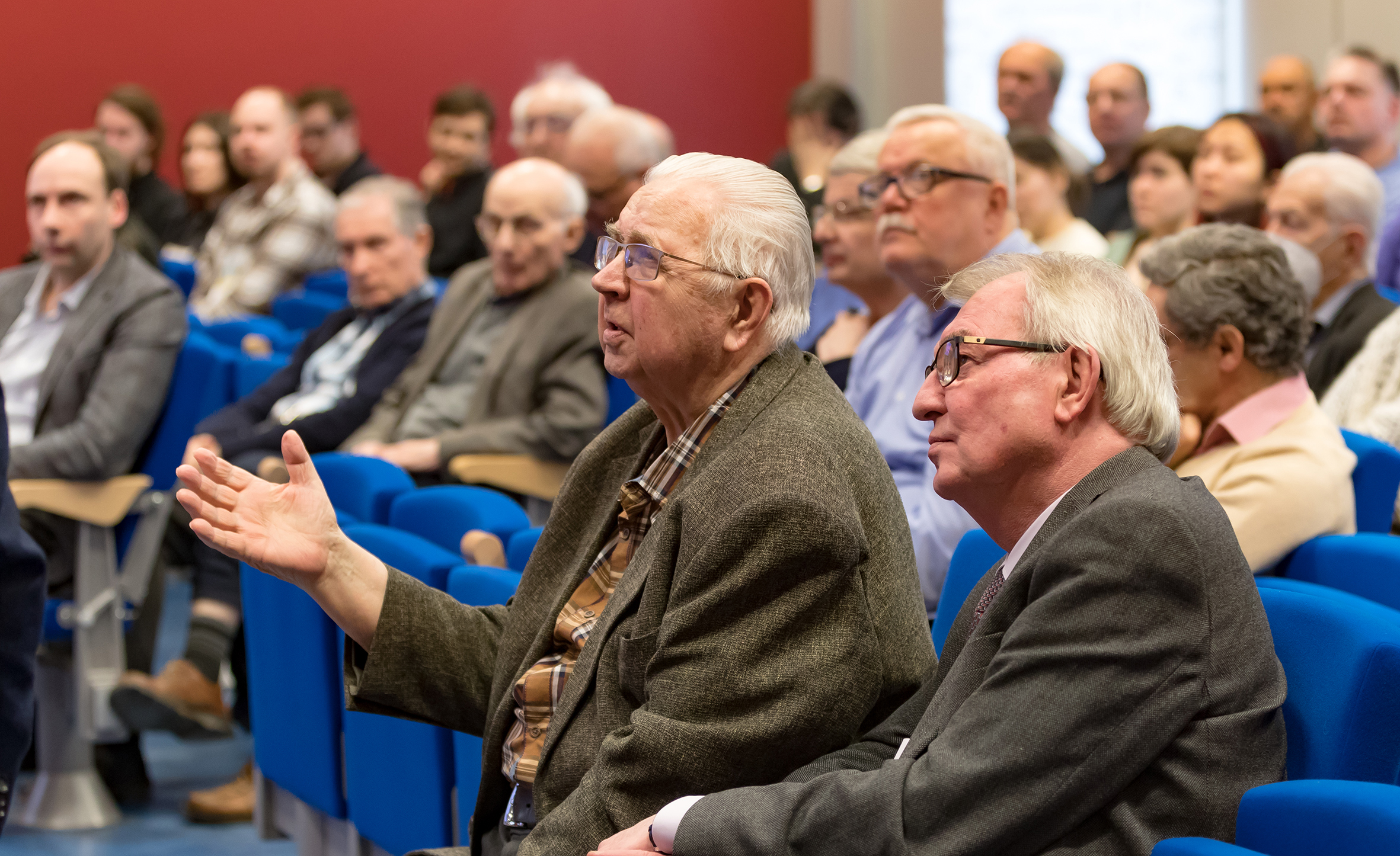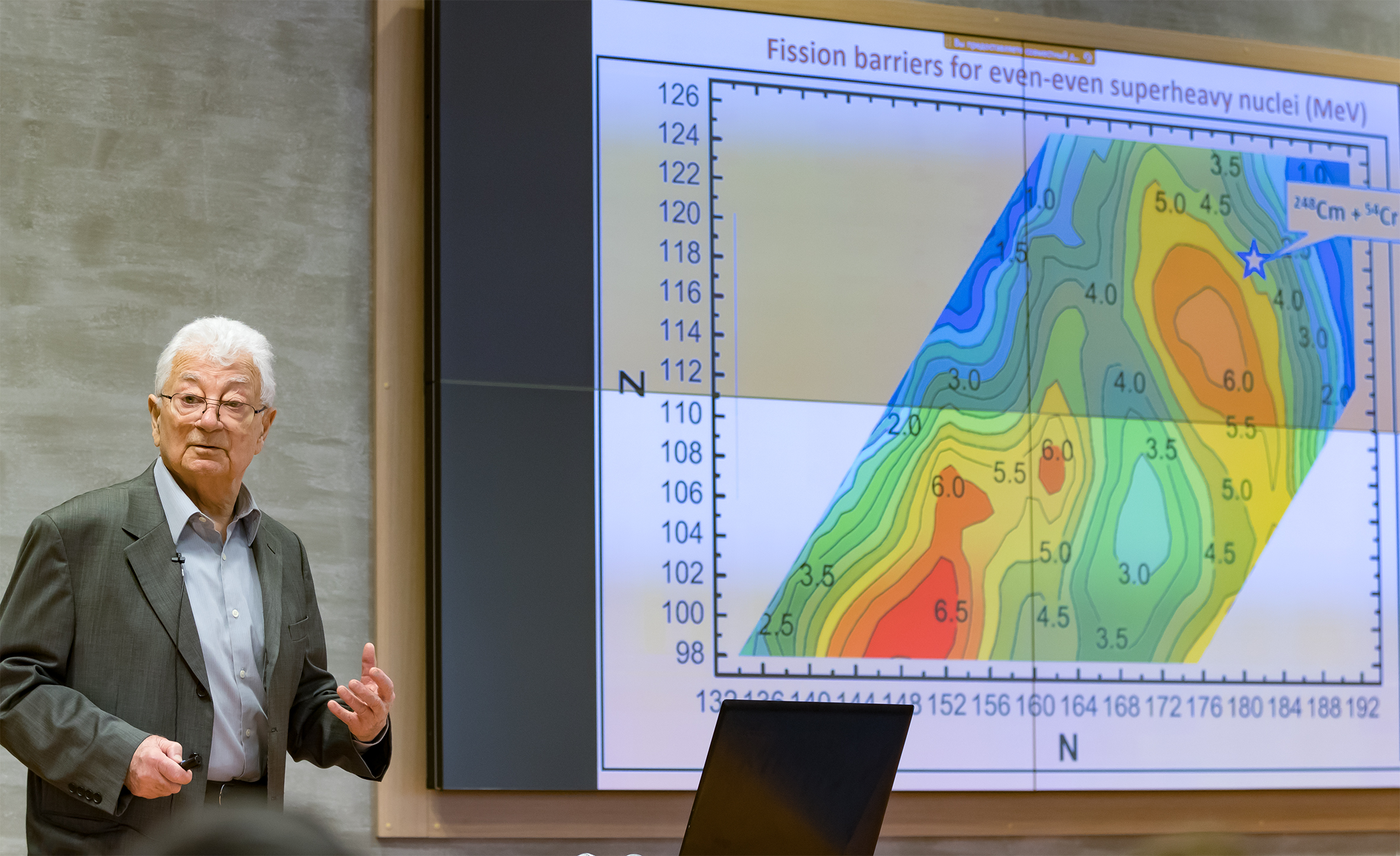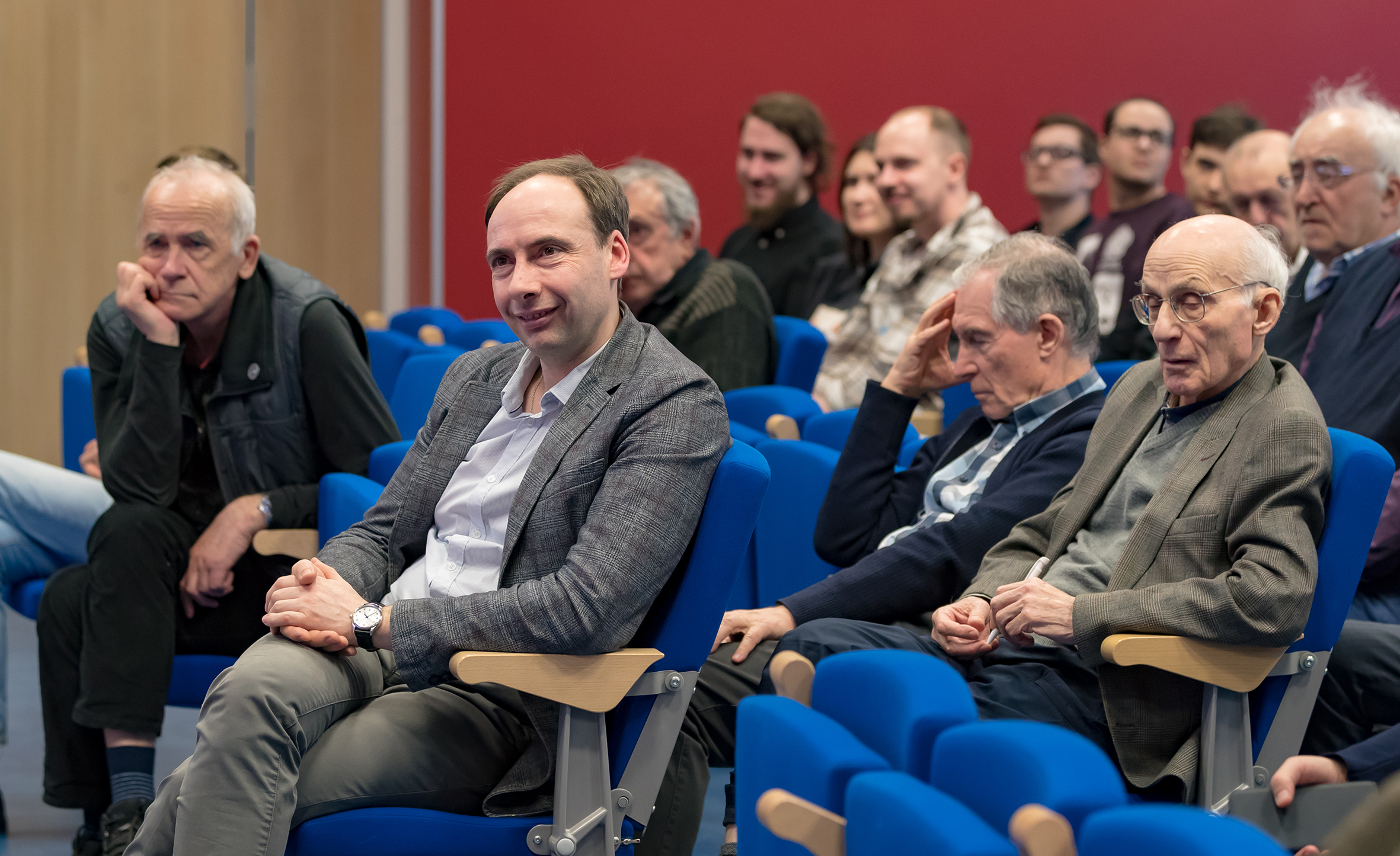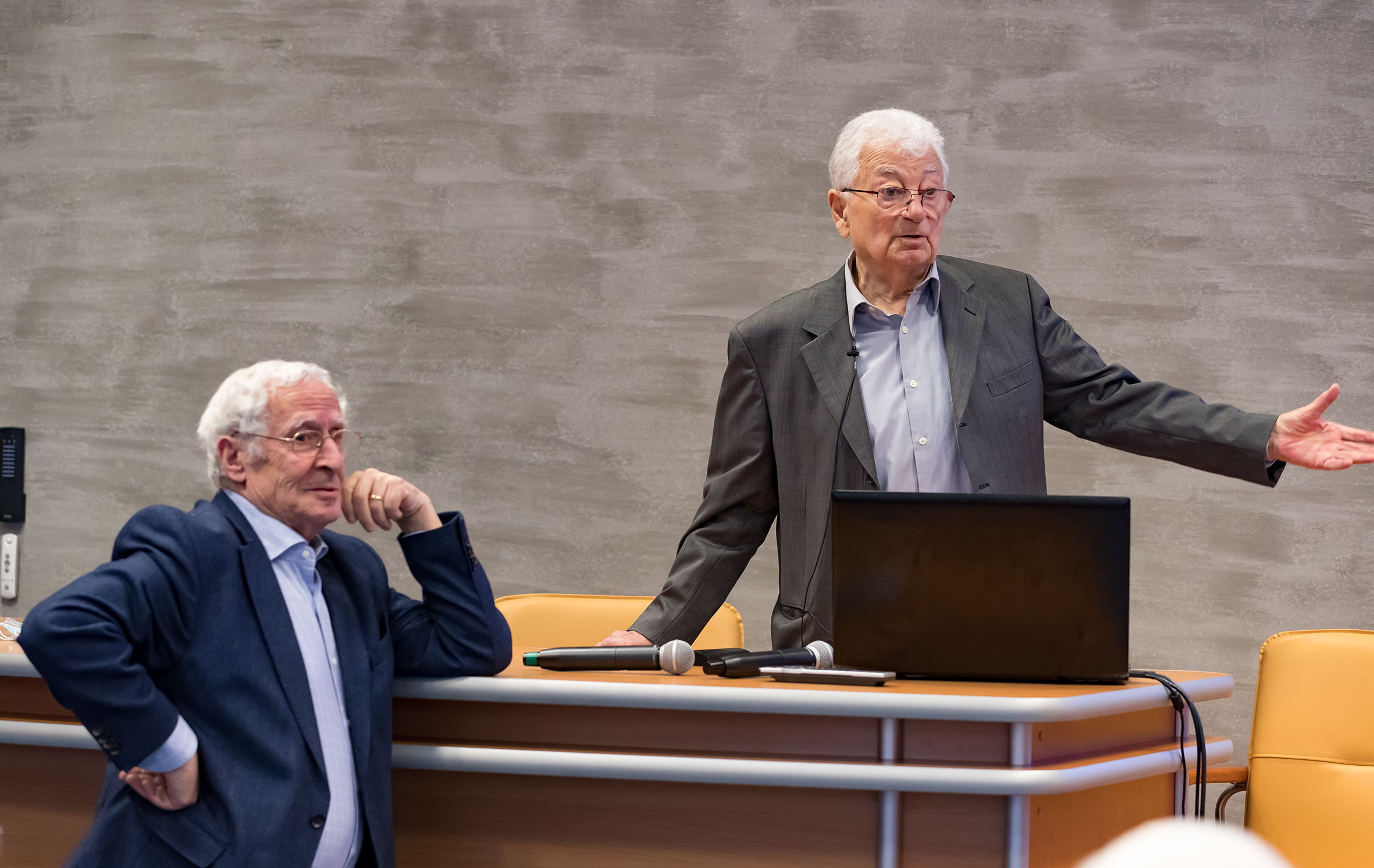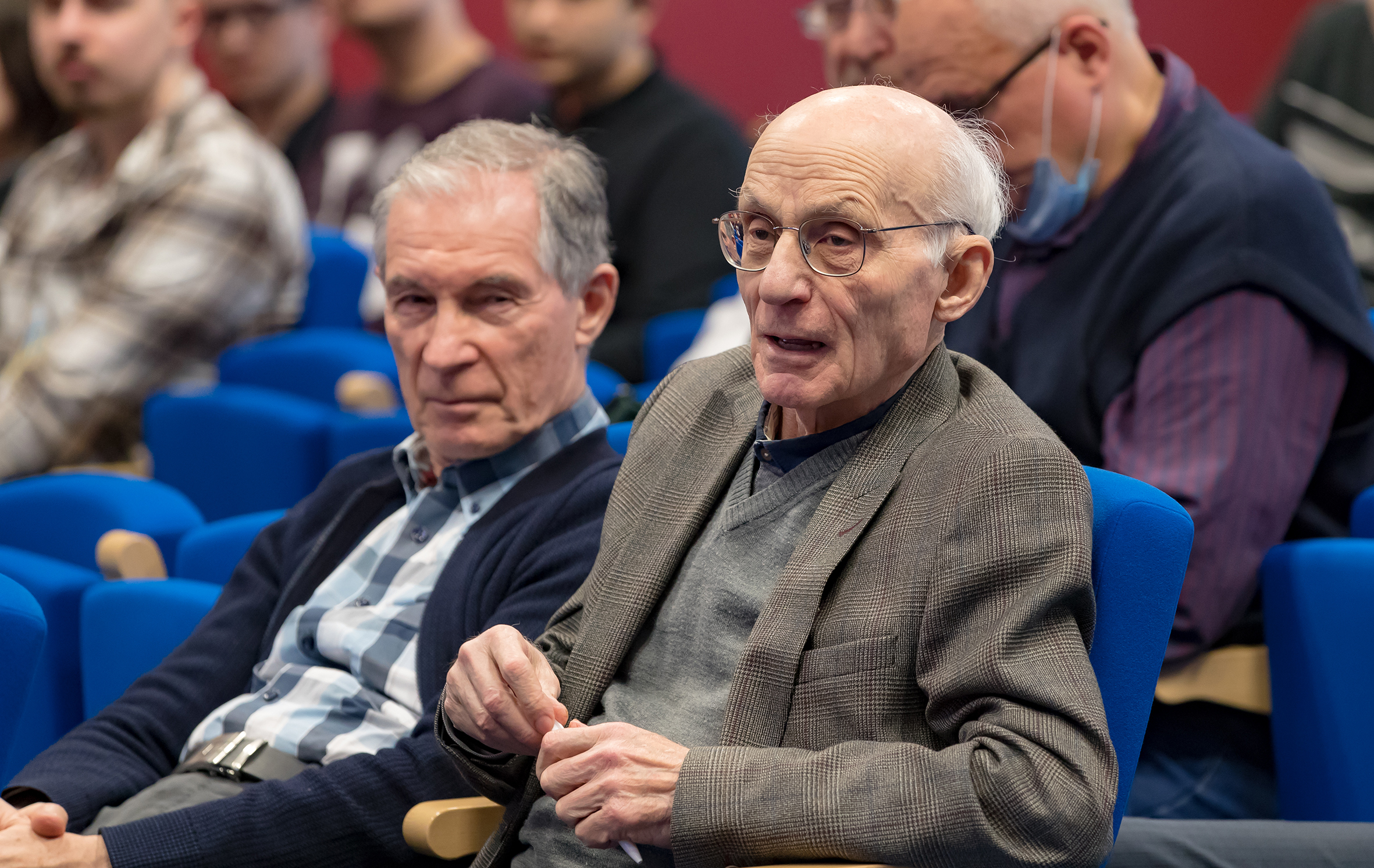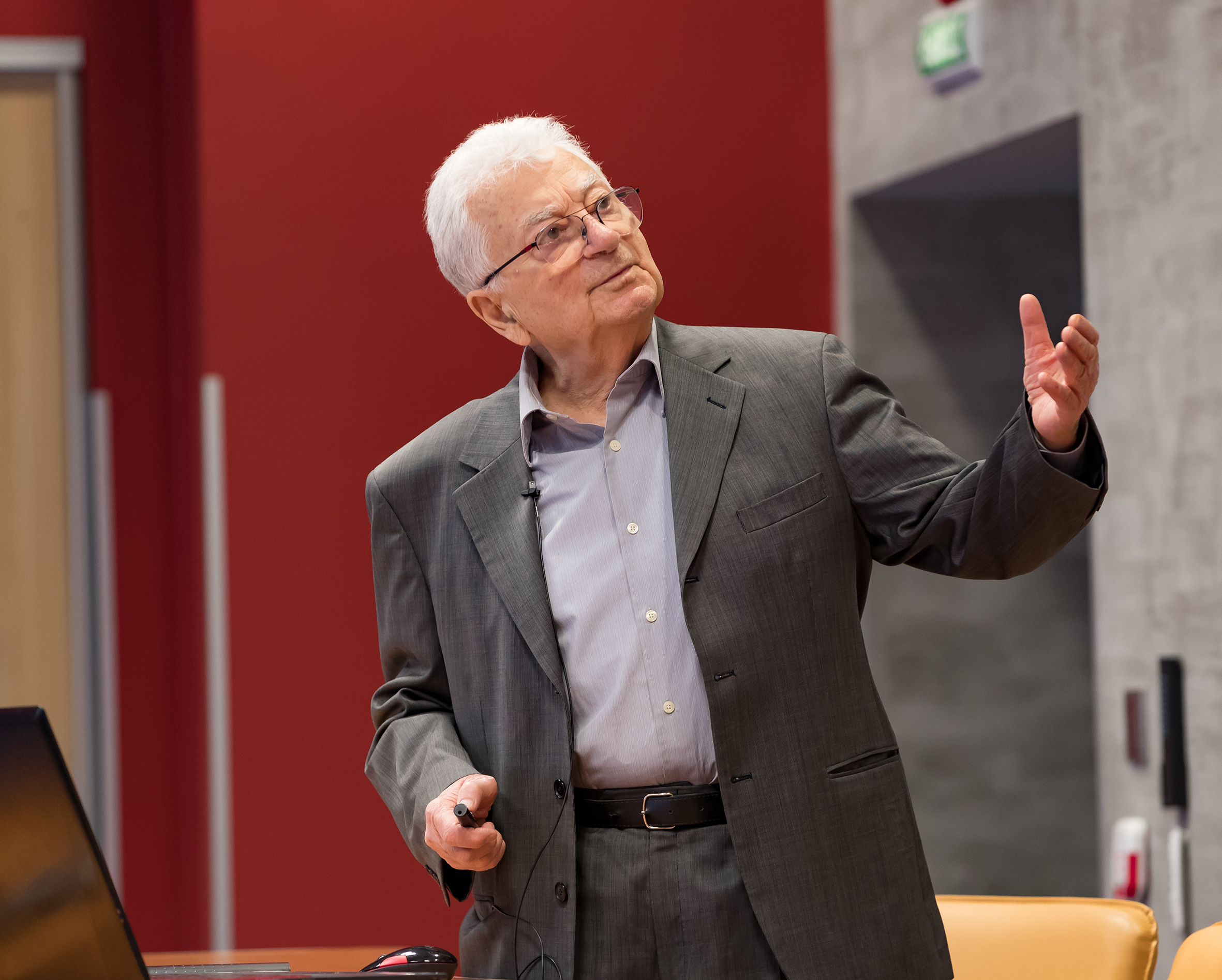At seminar on synthesis of element 120
News, 29 March 2022
Scientific Leader of the Flerov Laboratory of Nuclear Reactions RAS Academician Yuri Oganessian made a report “On the way to the synthesis of element 120” on 24 March at a joint laboratory seminar.
The speaker presented a short analysis of SHE synthesis in cold and hot fusion reactions and then considered the ways of synthesis of element 120 using 54Cr ion beam at the Superheavy Element Factory. Some experiments have been proposed to broaden the horizons on heaviest element synthesis and their decay properties.
The seminar was attended not only by FLNR JINR employees. Representatives of other laboratories and the Institute’s Directorate also joined the event.
Please, get acquainted with the comments by Head of the DC-280 facility Andrey Protasov.
The DC-280 Cyclotron of the Superheavy Element Factory
The discovery of new superheavy elements with atomic numbers 114-118 has been one of the most striking scientific achievements of the last decade.
Priority experiments have been conducted in JINR at the U400 accelerator complex of the Flerov Laboratory of Nuclear Reactions. The synthesis has been performed in complete fusion reactions involving a double magic nucleus 48Ca and neutron-rich actinide nuclei (242,244Pu, 243Am, 249Cm, 249Bk, 249Cf). The existence of the island of stability has been proved. The last period of the Mendeleev’s periodic table has been completed.
Today, one of the main questions related to the synthesis of new elements is weather elements with atomic numbers more than 118 can be synthesised. Direct synthesis of elements with Z>118 in fusion reactions means using projectiles heavier than 48Ca, since the capability of nuclear reactors to produce target material is limited to Cf isotopes. The production cross sections of nuclei with Z=120 in the 248Cm + 54Cr reaction and nuclei with Z=119 in the 249Bk + 50Ti reaction are expected to be about 10–20 times lower than that of the isotopes of SHE in experiments on the synthesis of elements 114 and 115 in reactions with 48Cа. For a more detailed study of nuclear and chemical properties of SHE, the efficiency of experiments has to be significantly improved. For this purpose, the Superheavy Element Factory (SHE) was created.
The construction of the DC-280 cyclotron was concluded at the beginning of 2019. At the same time, the first physical facility of the SHE Factory, a new gas-filled separator GFS-2, was created. The Superheavy Element Factory was officially commissioned on 25 March 2019.
Since the launch of the DC-280 cyclotron, it has operated for more than 14,000 hours. To date, the cyclotron beam parameters are close to the design ones. Beams with the power up to 2.5 kW, such as 40Ar+7 and 48Ca+10 with the intensities of 10.4 and 7.8 pμA respectively, have been obtained. Commissioning work at a flat-top resonance system is also underway. In particular, experiments on the new system effect on the accelerated beam of charged particles are continued.
Since December 2020, a number of experiments on the synthesis of element 114 (flerovium) in the 242Pu + 48Ca reaction, element 115 (moscovium) in the 243Am + 48Ca reaction, and element 112 (copernicium) in the 238U+48Ca reaction were carried out at the DGFRS-II setup. Scientists have obtained 128 synthesis events of element 114, 94 events of element 115, and 16 events of element 112.
Along with the experiments on the synthesis of superheavy elements, work on obtaining high intensities of chromium and titanium ions for experiments on the synthesis of elements 119 and 120 is underway. To date, scientists have produced 48Ti with the intensity of 1 pμA and 52Cr with the intensity of 2.6 pμA.
At the end of 2021, the installation and commissioning of the gas-filled separator DGFRS-III for research on spectroscopy and SHE chemistry were completed. In December, the first tests with 48Са ion beam were carried out.

